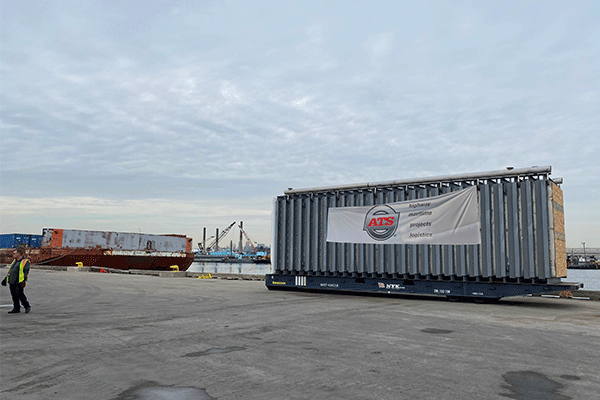
The world we live in is really quite large. And with seven continents, 195 countries and 835 inland and seaports currently active across the globe, moving freight internationally gets more complicated every year.
This makes understanding the intricacies of these processes feel unachievable for many shippers. But, it doesn’t have to.
You’re looking for a bit more information this time around and we don’t blame you. You’re the master of your shipping budget and the more you understand the factors that contribute to your cost, the better prepared you’ll be.
Here at ATS International (ATSI), we’ve been moving freight across the globe for decades.
From long journeys traversing the oceans, to shorter, more time-sensitive hauls, our expertise spans the world . . . and back again :).
That said, you should never be left with questions about your international freight rates and it’s time for our expertise to become yours.
In this article, we’ll outline the major factors that impact the price you pay to get cargo moving and leave you with some tactics for saving a bit of money on your next international shipping excursion.
So, let's talk about the price of transporting freight across the world's oceans.
What Does It Cost to Ship Freight Internationally?
The price of shipping your cargoes internationally will change based on a number of factors such as your selected route, method of transport, origin and destination. However, expect to pay between $10,000-$18,000 per container for your containerized cargo and between $100-$200 per weight/measure (W/M) for non-containerized shipments.
Note: The per container and W/M ranges above measure price estimates for primary ocean shipping routes and do not take into consideration possible adjustment factors such as currency (CAF), bunker fuel (BAF), peak season and port congestion fees.
How Does ATS International Price Your Freight?
Before we dive into the heart of this discussion, let’s address the main reason you’re here; you’re wondering how much it will cost to work with us.
First off, thank you for the opportunity. Assisting shippers like you is the reason we got into the international transportation business and your consideration is truly appreciated.
International freight is priced very specifically here at ATS. We aren’t interested in over-charging customers or coming back for more money should unexpected costs occur. Instead, the transparency and reliability shippers, like you, value in a transportation partner shines through in the quotes we provide.
Here at ATSI, we take pride in offering “best-value” pricing for all international loads.
Every rate is well thought out — adjusted for varying international conditions, takes into account all port and handling charges, includes the cost of pre-carriage & on-carriage transportation to/from the ports (when applicable) — and roundly reflects the price of getting freight moved.
The rate you’re given is the cost of doing business in the international transportation world. No more, no less. Often, this means that our rates aren’t the lowest cost you’ll receive, but rather the “best value” option to get the job done the best way possible. Every time.
But how are reliable international freight rates — like those offered by ATSI — calculated?
Planning is key to ensuring the rate you’re given accurately reflects the final price of moving your freight. And without forming what we like to call the optimal “transport concept”, budgeting for international transportation can become difficult.
Let’s talk about the factors that contribute to your load’s transport concept and, therefore, the price you’ll pay.
Forming a Transport Concept
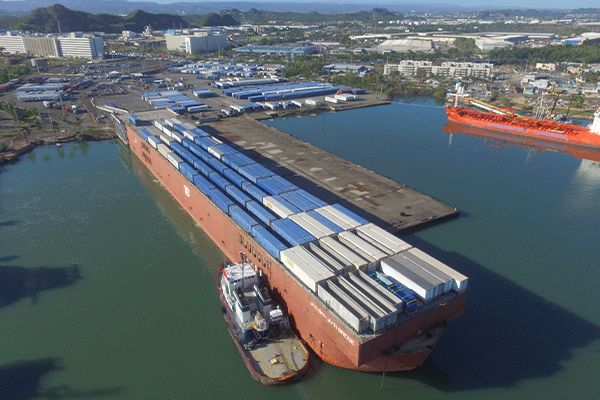
In the international shipping world, proper planning can mean the difference between an on-track delivery arriving conveniently with minimal risks — and prolonged delays that send ripples of disruption along your supply chain.
A well-formulated transport concept is an ultimate hedge against costly scenarios of incident.
When done properly, a freight’s journey is mapped from origin to destination including all stop-off or intermediate points along the way.
For these concepts to be successful, a shipment’s best-fit accommodations must be identified at all levels, including:
- How will freight get to its port of export (POE)?
- Will it go via rail, truck, or barge?
- Which POE — based on the shipment’s specifications (destination, dimensions, mode of transport, etc.) — is the best option?
- Which ocean carriers are capable of transporting this type of freight?
- What vessel schedules meet the delivery requirements?
- What is the freight’s best-fit route?
- Straight to the port of destination or with a stop-off?
- How will freight get from its port of discharge (POD) to the consignee?
- Will it go via rail or truck, or barge?
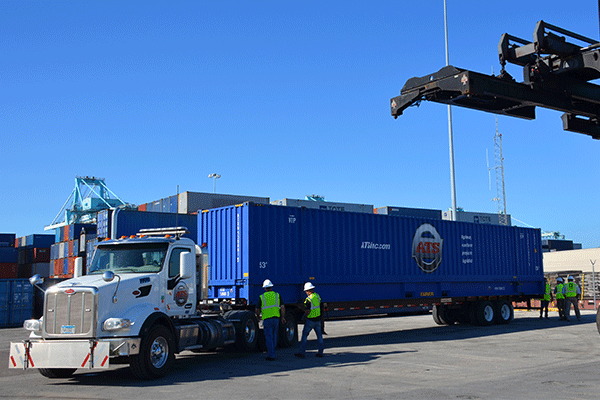
To outline how this is done in practice, let’s imagine you have a shipment that needs to get from Beijing, China to Austin, Texas.
Making this journey — a journey that amounts to a pretty significant undertaking — takes planning.
Most specifically, getting freight from the heart of China across the ocean and into the depths of the American south, takes a comprehensive transport concept.
You see, accomplishing this task can be done in any number of ways — depending on the specifications of the cargo in question. And, planning the route of these shipments becomes more of a puzzle than anything else.
Should you send your cargo by rail to the port of Shanghai or by truck to the port of Weihai? Perhaps a truck to the port of Tianjin would be best based on the optimal ocean carrier and vessel liner service schedule?
Once at the port, which ocean carrier makes the most sense? Are there any that will go directly to the port of Houston or will the freight need to be sent to Los Angeles creating a longer on-carriage to final destination, but overall reduced cost option instead?
Would it be more cost effective to send the cargo to the port of Beaumont and then on to Austin via rail? How will current trucking market conditions in Texas impact this decision?
As you can see, there are many variables and options to consider when formulating an optimal transport concept. Since these plans are so important for the success of a shipment and the maintenance of your budget, they simply cannot be overlooked.
It’s also worth noting — due to the fast-paced and unpredictable nature of international shipping — sometimes, things go awry. This is where working with a competent transportation provider boasting a history of developing optimal transport concepts, and knowing how to pivot should something change, can be extremely valuable.
What Factors Contribute to International Freight Shipping Price?
Once a provider has a good amount of experience formulating transport concepts and offering these services, competencies are developed.
Every shipment is different and costs vary greatly from each load to the next. That said, there are five cost factors that consistently make their mark on the pocketbooks of international shippers.
- Pre-Carriage Costs at Origin
- Port Service Charges at the Port of Export (POE)
- Ocean Carrier Fees
- Port Service Charges at Port of Discharge (POD)
- On-Carriage Costs at Destination
Factor #1: Pre-Carriage Costs at the Origin
Pre-carriage costs are expenses — billed to the seller or buyer based on the Incoterm of the sale — that cover the in-land transportation of international cargo from its original location to the port it will depart from.
These rates are dictated by the current going rate of transportation services (trucking, rail, etc.) in each shipment’s country of origin.
If a shipment is leaving from Peru, the cost of pre-carriage to the port will cost whatever current trucking market conditions value these services at.
As such, the cost of pre-carriage services will vary greatly depending on the country where these services are being procured.
Factor #2 Port Service Charges at the Port of Export (POE)
As soon as freight arrives at its port of export, the work begins to get it positioned and secured onto a marine vessel for the next portion of its journey.
This often means that non-containerized and breakbulk cargo must be offloaded from its pre-carriage vehicle, deposited within the port until its ocean carrier is ready for loading, loaded onto the soon-to-be-departed vessel and securely lashed for what promises to be an exciting journey.
The workers charged with handling, transferring, processing, loading and securing cargo while at the port are called Longshoremen and/or Stevedores.
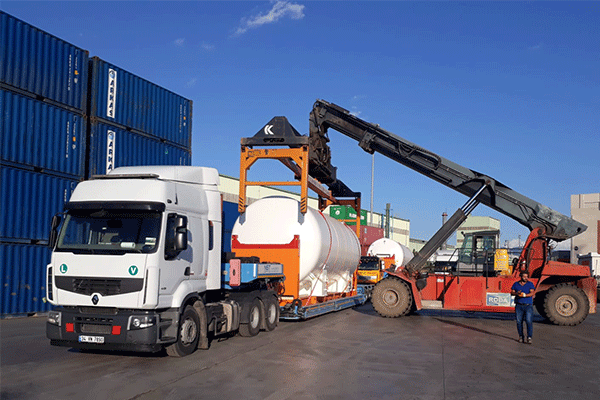
All of the services performed by these port employees are tied to the final freight rate paid by the seller or buyer. These workers are well compensated for the work they do to keep the world’s supply chains on schedule. As such, expect to pay for any necessary services performed at your freight’s POE.
In addition to any handling, transferring and loading fees — charges typically referred to as “terminal charges” — here are a few other port fees that may impact your final rate:
- Port Detention Charges
- Drayage Charges
- Equipment Demurrage Charges
With proper planning and oversight, unnecessary charges like detention and demurrage can be avoided. And, provided your partner has a firm transport concept, they shouldn’t impact the price of your load.
Factor #3: Ocean Carrier Fees
Depending on the length of an international shipment’s haul, and the current supply of carriers in the region, the fees associated with securing space on an ocean vessel can get pretty expensive.
Ocean carrier costs — which are typically calculated based on the dimensions of your shipment — often make up the largest portion of international shipping rates and, based on available carrier capacity, can vary greatly.
Although these ocean carrier fees can get expensive, the price rises when you need to find a solution with urgency. The quicker you want it, the more you can expect to be charged.
Because of this, allowing flexibility in your timeframe and planning properly will go a long way toward avoiding unnecessary costs.
Factor #4: Port Service Charges at Port of Discharge (POD)
Following a successful voyage, each international shipment has another interaction with port workers at its POD. Just like the handling, transferring and other services incurred at its POE, each shipment will need these services once more.
To assist your freight’s journey onward, POD charges will be applied to your load for all unloading, handling, storing and re-loading done by any of the port's vital employees.
Again, the method used to quote charges at the port varies from one country, port and destination to the next. To fully understand the rate you’re given for your freight’s stay at its port of discharge, ask your provider how these charges were quoted.
Note, ancillary port charges like equipment demurrage, drayage and port detention fees pop up more commonly on this side of a shipment’s journey than on the front-end.
As such, proper planning and practicing vigilance as your freight arrives at the port will help you avoid any unnecessary fees.
Factor #5 On-Carriage Costs at the Destination
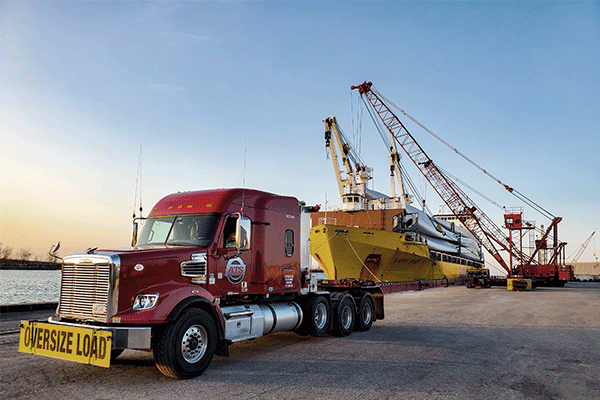
Your freight made it across the shining sea, through its port of destination and is ready for the final leg of its journey. Getting your freight into the open arms of your consignee though will add to your freight rates once more.
On-carriage charges are the costs associated with locating and securing a viable solution to transport your cargo from its POD to its final destination.
These are rates calculated based on the going rate for transportation services within your cargo’s country of destination and will fluctuate accordingly.
How Can You Save On International Shipping Costs?
Moving freight internationally can certainly turn into a cash-rich endeavor — but it doesn’t have to be.
By working with a seasoned international freight forwarder, capable of piecing together the best transport concept for your freight and making adjustments as needed, can truly save you money.
ATS International takes pride in being such a provider.
Things might change, market prices may fluctuate and arrangements may fall through. ATS International has the expertise needed to combat any issues that pop up and price your freight correctly every time.
Curious About Your International Freight Rate?
Now that you have a better understanding of the factors that contribute to the price you pay to move your freight internationally, it’s time you received an accurate rate, calculated to get the job done.
You clicked on this article to gain a better understanding of what international shipping will cost. Although it's difficult to give you exact numbers in such a general form, if you reach out to us, we’re more than happy to provide additional insight.
And, you can rest assured that your rate will accurately reflect the best-value option to get the job done.
So, whenever you’re ready, request a quote and find out exactly how much your international freight transportation will cost!
We’re ready and eager to assist you in any way we can.




